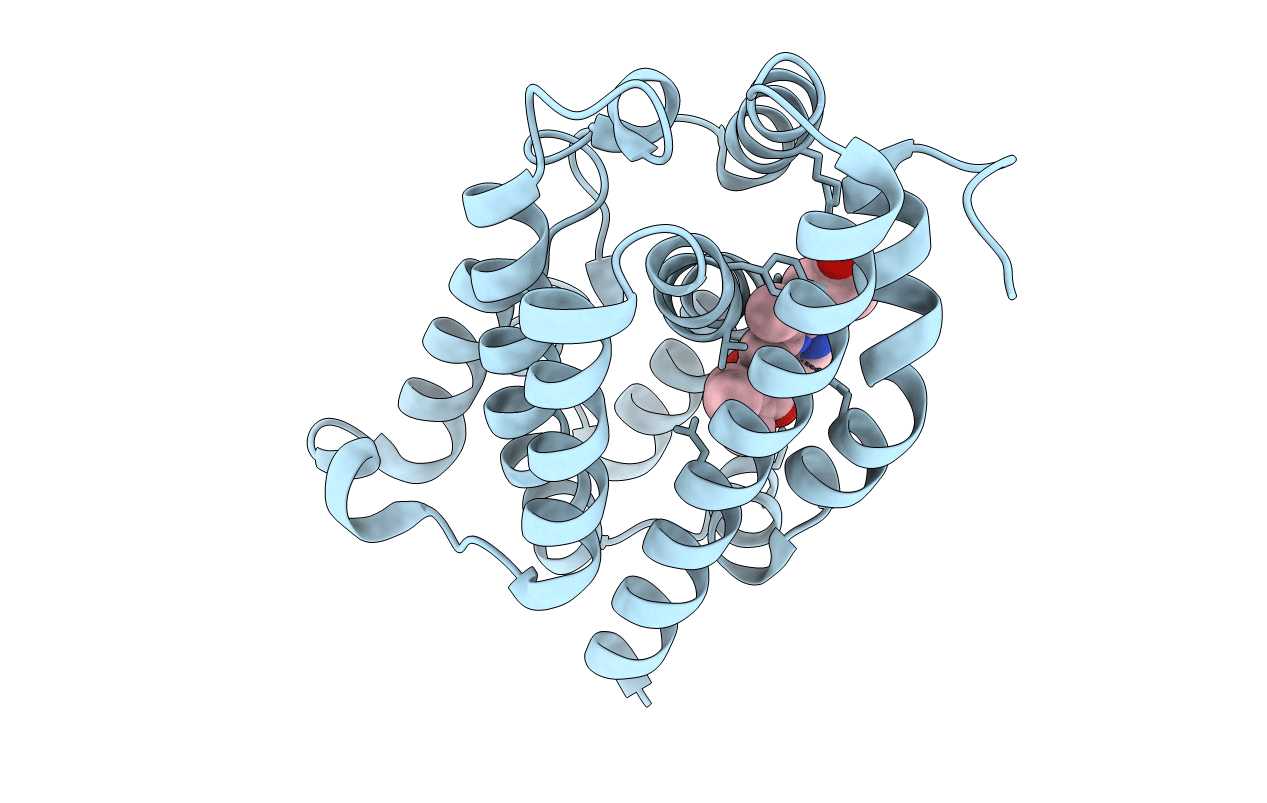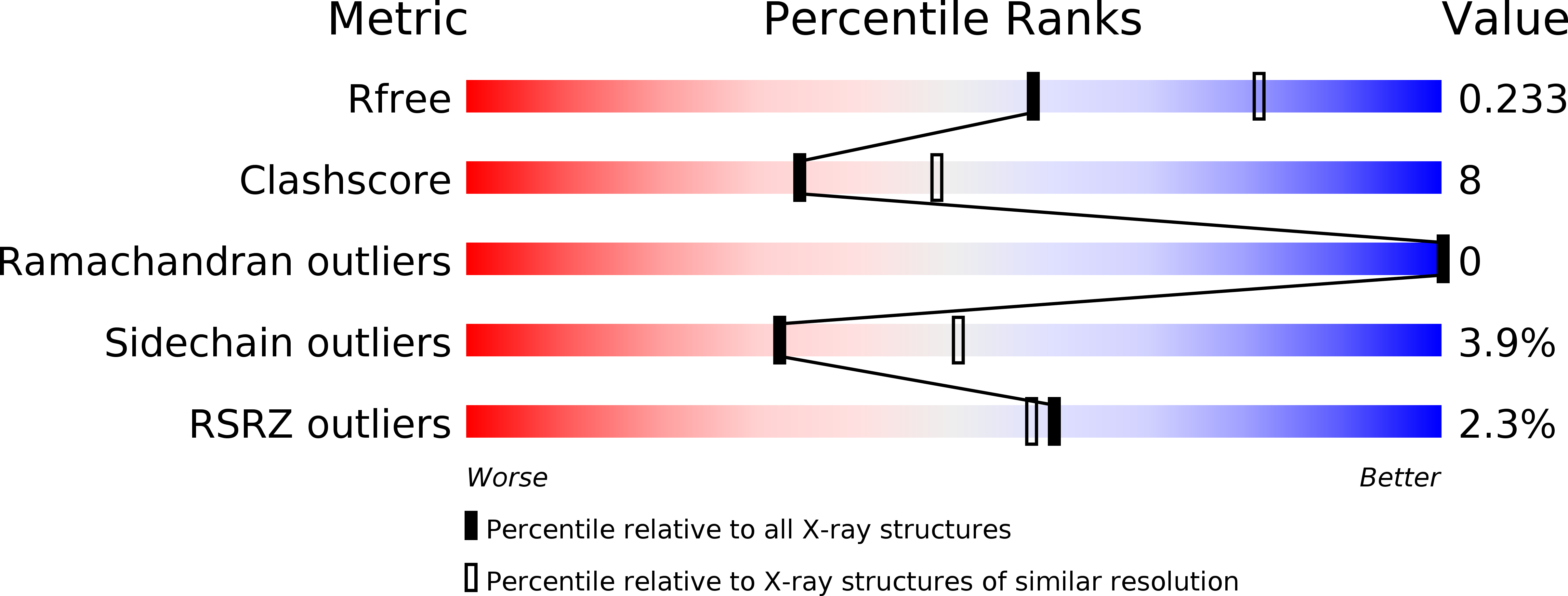
Deposition Date
2002-12-29
Release Date
2003-09-02
Last Version Date
2023-10-25
Entry Detail
PDB ID:
1J2C
Keywords:
Title:
Crystal structure of rat heme oxygenase-1 in complex with biliverdin IXalpha-iron cluster
Biological Source:
Source Organism:
Rattus norvegicus (Taxon ID: 10116)
Host Organism:
Method Details:
Experimental Method:
Resolution:
2.40 Å
R-Value Free:
0.23
R-Value Work:
0.19
R-Value Observed:
0.19
Space Group:
P 32 2 1


